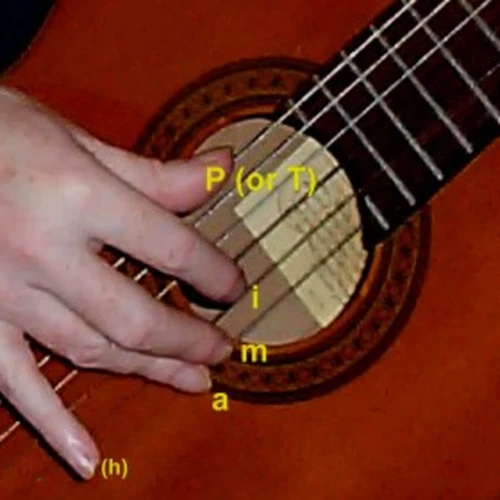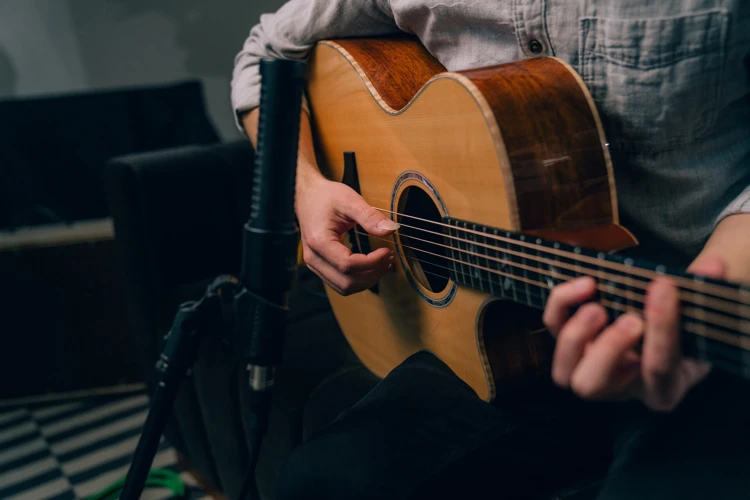Are you a beginner electric guitar player looking to delve into the world of fingerpicking country music? If so, you’ve come to the right place. Fingerpicking is a fundamental technique in country music that adds depth and emotion to your playing. In this beginner’s guide, we will explore the basics of fingerpicking on the electric guitar and how you can start incorporating this technique into your country music repertoire. So grab your guitar, tune up, and let’s get started on this musical journey.
Choosing the Right Electric Guitar
Before diving into fingerpicking, it’s essential to ensure you have the right instrument for the job. While any electric guitar can be used for fingerpicking, some features make certain guitars more suitable for this technique. Look for a guitar with a comfortable neck profile, medium gauge strings for easier fingerpicking, and a clean, bright tone that cuts through in country music. Popular choices for fingerpicking on electric guitars include Telecasters and Stratocasters due to their versatility and twangy sound.
Setting Up Your Guitar
Once you have your electric guitar, it’s crucial to set it up correctly for fingerpicking. Make sure your guitar is properly intonated, and the action is set to a comfortable height for your fingers. Consider using lighter gauge strings, as they are easier on your fingers and allow for more intricate fingerpicking patterns. Additionally, experiment with different pick-up selections to find the tone that best complements your fingerpicking style.
Learning the Basics of Fingerpicking
Fingerpicking involves using your fingers to pluck the strings of the guitar individually, creating a melodic and rhythmic pattern. The most common fingerpicking technique in country music is the Travis picking style, named after the legendary guitarist Merle Travis. In Travis picking, the thumb plays the bass notes while the fingers pick the melody and harmony notes simultaneously. Practice simple fingerpicking patterns like alternating bass notes with the thumb and playing a melody with your fingers to build coordination and dexterity.
Exploring Essential Fingerpicking Patterns
To master fingerpicking in country music, it’s essential to familiarize yourself with some common fingerpicking patterns. The alternating bass pattern is a foundational pattern where the thumb alternates between two bass notes, typically the root and fifth of a chord. Another popular pattern is the boom-chick pattern, where the thumb plays a bass note followed by a chord strum with the fingers. Experiment with these patterns and incorporate them into your favorite country songs to enhance your playing style.
Developing Finger Independence
One of the challenges of fingerpicking on the electric guitar is developing finger independence. Each finger plays a crucial role in creating a cohesive sound, so it’s essential to practice exercises that focus on individual finger strength and coordination. Start with simple exercises like playing scales using different finger combinations and gradually increase the complexity as you build confidence in your fingerpicking abilities.
Adding Dynamics and Expression
Fingerpicking allows for greater control over dynamics and expression in your playing. Experiment with varying the intensity of your plucks and strums to create contrast in your performance. Use techniques like palm muting to dampen the strings for a softer, percussive sound or let the strings ring out for a more resonant tone. By mastering dynamics, you can infuse emotion and nuance into your fingerpicking arrangements, making them more captivating and engaging.
Mastering Chord Progressions and Fingerpicking
In country music, chord progressions play a vital role in creating the genre’s signature sound. To enhance your fingerpicking skills, practice playing common country chord progressions using fingerpicking patterns. Start with simple progressions like the I-IV-V progression or the classic I-VI-II-V progression and experiment with different fingerpicking styles to find what works best for each progression. Understanding how chord progressions and fingerpicking interact will help you create compelling arrangements that capture the essence of country music.
Exploring Hybrid Picking Techniques
Hybrid picking combines flatpicking with fingerpicking to create a dynamic and versatile sound on the electric guitar. This technique involves holding a pick between your thumb and index finger while using your remaining fingers to pluck the strings. Hybrid picking allows for fast and precise picking of individual notes and chords, making it a valuable skill for country guitarists. Experiment with incorporating hybrid picking into your fingerpicking repertoire to add depth and complexity to your playing.
Learning from Country Guitar Legends
One of the best ways to improve your fingerpicking skills in country music is to study and learn from the masters. Explore the playing styles of iconic country guitarists like Chet Atkins, Merle Travis, and Jerry Reed to gain insight into their fingerpicking techniques and approaches. Watch live performances, listen to recordings, and transcribe their songs to understand how they use fingerpicking to create memorable melodies and rhythms. By emulating the techniques of these legends, you can elevate your own fingerpicking abilities and develop a unique style that pays homage to the roots of country music.
Practicing with Country Songs
To solidify your fingerpicking skills, practice with popular country songs that showcase the technique in action. Choose songs with clear and melodic fingerpicking patterns that allow you to practice different techniques and styles. Start with simple songs like “Wildwood Flower” or “Freight Train” to build your foundation, then progress to more intricate pieces like “Windy and Warm” or “Mr. Bojangles” to challenge yourself and expand your fingerpicking repertoire. Practice consistently and with purpose to improve your fingerpicking proficiency and musicality.
Recording and Analyzing Your Playing
Recording yourself while practicing fingerpicking can provide valuable feedback on your technique and performance. Listen back to your recordings and analyze your playing for areas of improvement, such as timing, tone, and dynamics. Pay attention to your finger placement, hand position, and overall sound to identify any weaknesses or areas where you can enhance your fingerpicking skills. Use recording as a tool for self-assessment and growth, allowing you to track your progress and make adjustments to refine your fingerpicking abilities.
Seeking Feedback and Guidance
Don’t hesitate to seek feedback and guidance from experienced guitarists or instructors to improve your fingerpicking technique. Join online forums, attend workshops, or take lessons to receive constructive criticism and valuable insights into your playing. Collaborate with other musicians, participate in jam sessions, and seek mentorship from seasoned fingerstyle guitarists to expand your knowledge and skills in fingerpicking country music. Embrace feedback as an opportunity for growth and learning, helping you become a more proficient and confident fingerstyle guitarist.
Looking to improve your fingerpicking skills for country music on the electric guitar? Check out our articles on essential fingerpicking exercises for country guitar, tips to improve your fingerpicking for country guitar, acoustic guitar picking guide for country music, sliding techniques for electric guitar in country music, and prebend technique for country guitar solos for valuable insights and techniques!
Conclusion
Fingerpicking on the electric guitar is a rewarding and versatile technique that adds depth and character to your country music performances. By mastering essential fingerpicking patterns, developing finger independence, and exploring dynamic techniques, you can elevate your playing and create captivating arrangements that capture the essence of country music. Practice consistently, study the techniques of country guitar legends, and immerse yourself in the rich tradition of fingerpicking to become a skilled and expressive fingerstyle guitarist. So grab your guitar, practice with dedication, and let your fingers dance across the strings to create beautiful music that resonates with the soul.





